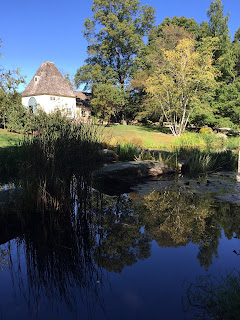The best spring gardens are planned months in advance...which means you'd better start thinking about your warm-weather landscape now. There's plenty you can do this winter to ensure your yard thrives in April.
Get a head start by planting now. Before the snow hits, scatter some seeds in your flower garden beds, and cover them with oak leaves to keep them protected. It's best not to wait until the snow melts, because many seeds need a period of cold before they'll sprout. Some of the best bloomers include poppies, foxglove, larkspur, columbine, hollyhock, and dianthus.
Shop for garden ornaments now, during the off-season. If you wait--even a few weeks--stores and nurseries start setting up for spring, and the excess warm-weather items go back to full price. The added bonus: that gazing globe, birdbath or frog sculpture you choose will add new dimension to the garden now, perking up the winter landscape. Over the years, the advent of frost-proof concrete and chip-proof glazings, along with a huge selection and variety in form, has made outside art popular all season long.
Send away for gardening catalogues. Comprehensive catalogs will supply you with high-quality plants for spring and garden reading to get you though the dreary winter days. And if you're yearning for April so badly that you can almost smell the scent of spring grass, try gardening virtually, via the Internet. With just a few keystrokes, you can commune with fellow enthusiasts, shop for bulbs from Holland or glimpse faraway gardens. It's the next best thing to spring, and may inspire new gardening ideas. I enjoy going on virtual tours of Versailles and the white gardens at Sissinghurst.
Send away for gardening catalogues. Comprehensive catalogs will supply you with high-quality plants for spring and garden reading to get you though the dreary winter days. And if you're yearning for April so badly that you can almost smell the scent of spring grass, try gardening virtually, via the Internet. With just a few keystrokes, you can commune with fellow enthusiasts, shop for bulbs from Holland or glimpse faraway gardens. It's the next best thing to spring, and may inspire new gardening ideas. I enjoy going on virtual tours of Versailles and the white gardens at Sissinghurst.
While you're in touring mode, why not take a trek around your own yard? I think the best way to map out what plants you intend to add to your landscape works best when you meander along your own garden paths, and visualize certain plants in certain spots. Bring a pencil and paper with you to sketch out ideas and make notes when inspiration hits.








































